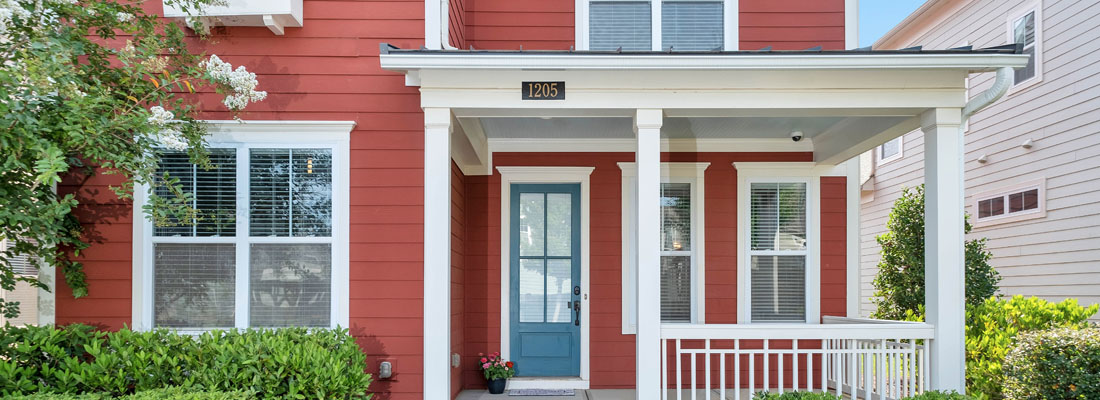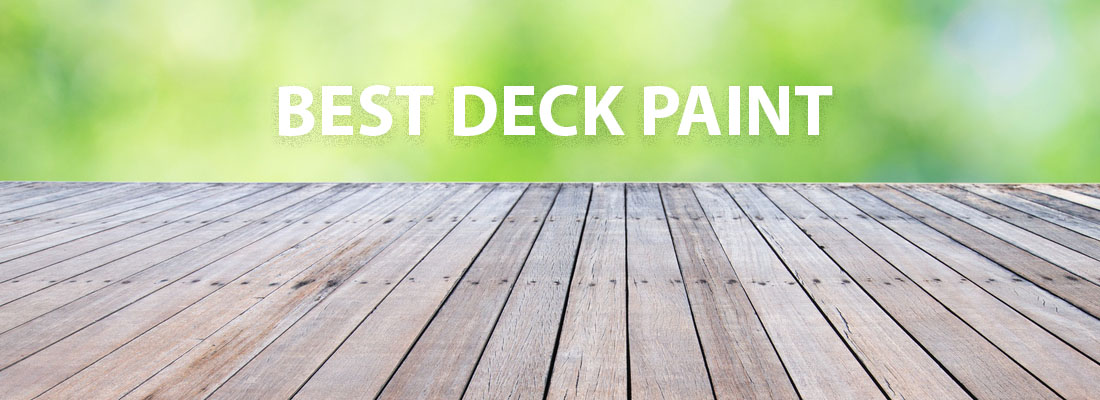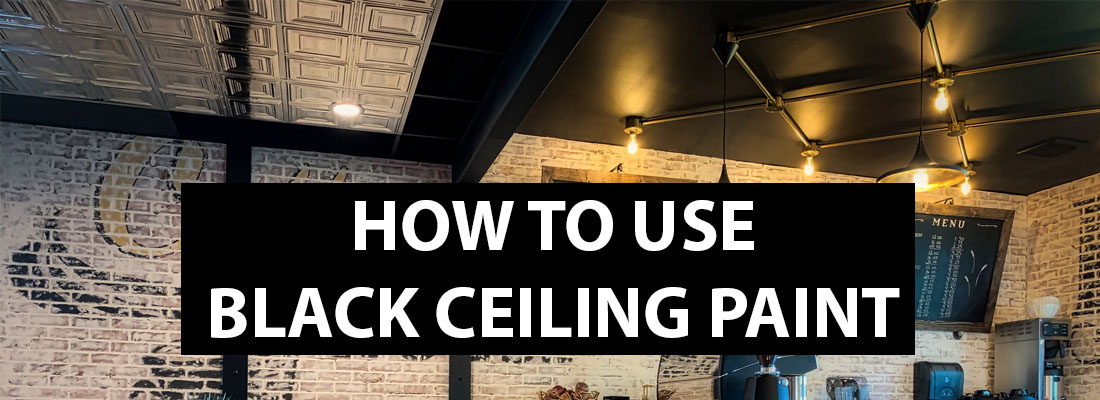A fresh coat of paint is always the most cost-effective way of making something look new again. But when it comes to updating your deck, how do you know what’s the best deck paint to use? In this article, we’ll walk you through the best way to repaint your deck while also sharing with you what we have discovered to be the best paint and stain for your deck. We’ve evaluated several deck paints on the market and ranked them according to ease of application, cleanup, sheen, and durability. So, whether you want to go with a traditional deck color or want your deck to be a little more bold and unique, we’re here to ensure you choose the best deck paint for your project.
List of Best Deck Paint and Stain
If you’re lucky enough to have a deck, you’ll want to take proper care of it to keep it looking beautiful for seasonal gatherings or family time. For something this important, you don’t just want to pick up the first paint or stain you spot at the store. We’ve done our homework and have compiled a list of the very best deck paint and stains out there:
-
Best Color Selection Deck Paint
Behr Premium Low-Lustre Porch & Patio Floor Paint
This deck paint is ideal for exterior applications such as patios, porches, basements, and decks. It’s resistant to fading, scuffing, peeling, cracking, and mildew. The best part is, it’s available in custom color matching!
-
Best Paint for Wood Deck Railing
Montage Signature Eco-Friendly Paint
Offering superior coverage and protection, this paint is perfect for your specialty finishes. Extremely versatile, Montage Signature is the #1 paint choice for all your needs.
Sikkens Transparent Matte Natural OIl-Based Stain
You’ll get amazing and long-lasting results with this one-coat application stain. It penetrates deep into the wood to protect against the Boise summer heat and frigid winter temperatures. You’ll love how it allows the natural grain of your deck or furniture to shine through. It’s a bit pricey but makes up for it in longevity.
Behr Premium Advanced Deckover
If you’re looking for durability, this paint is an excellent choice. It comes in a variety of color options, is applied easily, and holds up extremely well against the elements. It’s a thicker consistency of paint which means it will take longer to dry. You can use this paint on composite wood, wood, and concrete.
Kilz Latex Floor Paint L573611
Appropriate for all previously primed or painted surfaces including wood and masonry, this paint has a low-luster finish that applies smoothly and evenly. It also can be used on trim, siding, and trellises. You’ll appreciate that it’s resistant to fading, scuffing, cracking, and peeling.
Modern Deck Paint Colors
Updating the color of your deck won’t only give it new style but can also give it extended life. Stain and paint protect your wood from rotting while helping it stay clean and smooth. We’ve compiled a list of the perfect colors to enhance your outdoor space and give your deck a makeover:
When your goal is to add a stark contrast between your patio furniture or your home’s exterior paint color, black is the perfect choice. A solid acrylic black deck stain will completely cover any previous deck stain that remains. This will also add an extra layer of protection from scuffing, water damage, and the sun.
Tones of gray seem to be all the rage when it comes to exterior paint color. This holds true for decks and patios as well. A muted gray deck paint will refresh your outdoor space to a stylish look your friends and family will enjoy for years to come on those beautiful Boise evenings.
If you want to showcase the texture and grain of your deck, whitewashing is an option you should consider. Unlike solid stains or paints, whitewashing leaves portions of wood exposed, showing the imperfections and personality of your deck.
Slate is a dark enough tone to show a nice contrast between your deck furniture and landscaping while not being as stark as black. It lends to a trendy, modern vibe, especially when paired with a light oak railing.
Shades of dark, brick red are perfect for a colonial feel and always add personality to your backyard. Red especially pops when paired with a bright white deck paint.
We often think of redwood deck stains when picturing a traditional outdoor deck. This color goes well with the surrounding greenery of your landscaping as well as nearly any exterior home paint color.
A deck with a two-tone pattern is visually appealing and unique. Try using one color as a border or customize a design that works for your space.
If you’re hoping to preserve the natural look of your wood deck, a clear deck stain is for you. However, clear stain isn’t a good idea if your deck was previously painted and your old stain is lingering.
Picking a Deck Paint
It’s quite possible that the easiest part of painting a deck is the application process. Choosing the right paint or stain can prove to be a very difficult part of the project. With so many different deck paints on the market, it can be overwhelming for anyone.
Keep in mind how important it is to purchase an exterior paint that’s specifically created for decks and horizontal surfaces. Regular house paints are made to cover vertical surfaces where water and rain won’t sit. Decking is different and will accommodate puddles of water. Be certain the label on the paint you choose specifies that it can be used on horizontal surfaces.
Best Deck Paint Brands
When you’re in the market for deck paint for an upcoming home improvement project, it’s always smart to select a brand you can trust. The best deck paints can stand up to harsh and extreme weather conditions. Wind, rain, and extreme fluctuation in heat can really do a number on your deck. Below is a list of the top brands we recommend because of their reputation for consistent high-quality results:
If you’ve ever used Sherwin Williams paint after using a different paint brand, you know why it’s rated number one in customer satisfaction for interior and exterior paints. They offer a large variety of affordable outdoor paints in different colors and sheens.
Kilz has been providing Americans with quality primer and painting products for over four decades. They offer a product that combines both primer and paint in one to give you beautiful and effective results while cutting your application time in half.
The name Benjamin Moore has always been associated with quality paints and stains, providing both durability and style when spending time with loved ones outdoors.
Behr makes highly rated, award-winning paints, stains, and more that deliver superior value at every price point. With Behr, everyone can transform their space with the colors they love.
Rust-Oleum is a reputable company that specializes in outdoor protective paints. Their products create long-lasting results for both residential and commercial customers alike.
Best Places to Buy Deck Paint in Boise
There are several paint supply stores in the Treasure Valley that offer all the tools you would need for painting a deck. However, we’re giving you a list of our top three paint store choices:
–Sherwin Williams
–Home Depot
–Rodda Paint Store
Most of these paint stores offer several locations for your convenience.
Tools and Materials You’ll Need to Paint Your Deck
Before you start painting your deck, you’ll need to measure it by multiplying the length by the width. This will help you determine how much paint you’ll need to buy. If you already have paint on hand, check that it hasn’t dried out and is still usable. Here are the materials we recommend you have on hand:
- Exterior paint formulated for decks, patios, and porches 2. Multi-surface primer and sealer
- Paintbrush
- Roller
- Pressure washer
- Deck cleaner
- Extension pole
- Sponge
- 5-gallon bucket
Deck Paint Drying Time
As a general rule of thumb, your paint or stain should be dry within a 1-2 hour timeframe. We don’t recommend walking on it though for at least 5-6 hours. But remember that weather conditions can greatly affect drying time.
If you’re painting on a day with high humidity and cooler temperatures, you will need to wait longer for proper curing.
How Does Weather Affect Paint?
Humidity and temperature can actually have quite an effect on exterior paint. Boise is an area where you can experience some pretty intense temperature fluctuations. When the temp outside goes from around 100 degrees in the summer to 10 degrees in the winter, your paint can expand in the heat and contract in the cold. As the surface underneath expands and contracts, your paint will crack and peel.
Ultraviolet light from the hot Boise sun can also do a number on your exterior paint. When it comes to siding, your patio, or patio furniture, areas with warmer climates deal with paint prematurely fading. Making sure you protect your deck and exterior siding with paint specifically formulated for the outdoors will prolong the life of your paint job.
Should You Use Paint vs. Stain?
The number one determining factor when it comes to going with paint or stain will generally be preference. Which look do you prefer more? However, paint is thicker and tends to be more durable. It helps to note that stains are designed for use on wood surfaces that are bare or haven’t been treated. While stain does have color, it’s designed to allow the natural wood grain to show through. Most deck stains also include a sealer product that protects the wood from exposure to the elements.
Paint will conceal the wood grain which means it will also hide any blemishes or damage points in your deck. If you’ve had to replace boards in your deck that don’t match the others, the paint will restore a more uniform look.
If however, your deck is prone to humidity you will have to think about preventing mold and mildew. If this is the case, stain will be your best option. The stain will penetrate your deck wood to form a solid coating on top, unlike paint. While Boise doesn’t receive nearly the amounts of rain as other regions of the US, it can still rain a fair amount in the spring and fall. Consider what look you’re going for, your climate, as well as the current state of your deck to determine if paint or stain is right for you.
How to Paint a Deck
Once you’ve picked your deck paint or stain, here are the steps to successfully painting a deck along with some helpful tips:
-
Wash Down the Deck
Your deck must be completely clean before applying paint or stain. Even if your deck is new, it still needs to be thoroughly scrubbed and rinsed down as your first step. You can find several options for deck cleaning products at your local hardware store. Choose an all-purpose cleaner that will remove dirt, grime, and debris. If mold or mildew is a problem on your existing deck, purchase a cleaner containing mildewcide before painting or staining. You may be tempted to use a power washer to aid in the cleaning process, However, the high pressure may actually damage the wood by digging chunks out of it. A garden hose with a jet nozzle works well to get the job done without being so abrasive.
-
Sand and Scrape the Deck
Any deck paint that is peeling or bubbling will need to be removed before you can start repainting. Any rough or jagged areas need to be sanded until smooth. Using a wire brush, use large strokes to loosen any dislodged paint. The wire brush should make quick work of most loose paint but you’ll need to follow up with a paint scraper. A flat scraper that resembles a putty knife will be the best tool to remove any remaining loose paint. Be careful not to push the scraper too hard and gauge the surface. A pulling motion will be more effective and less destructive.
You may be tempted at this point to skip the important step of sanding. But scraping rarely gets rid of all existing deck paint. In order to have a cohesive look and feel, sanding is necessary to smooth out the edges between the bare wood and any remaining paint.
-
Apply Paint or Stain to the Deck
Before popping open your chosen paint or stain, tape off any areas of your home or garage you don’t want painted. We recommend using a roller with an extension pole for convenient painting while standing up. It’s also handy to have some various sizes of paintbrushes around for those spots a roller can’t get too.
Do your best to paint every angle of your decking. The more surface you can cover, the more it’s protected. Pay special attention to paint the underside of your decking along with all reachable sides. Sealing your deck will prevent mold and mildew from growing and add to its longevity.
Can you Paint Composite Decking?
Composite decking, which is the same as Trex decking, doesn’t accept paint naturally like a real wood deck. It’s made of plastic film that when mixed with wood fibers, creates a resilient material more durable than decking that is 100% plastic.
If you’re going to paint or stain composite decking, stain will work better than paint but might not last as long. Since paint and stain won’t adhere as easily to composite decking, you’ll need to scuff up its surface before application. Once the composite has been roughed up by sandpaper, paint or stain will adhere much better with a gritty surface to grip onto.
How to Remove Decking Paint?
Stripping your deck of paint can be a messy job. There are several different stripping products on the market you can use. These gel-like substances when applied to your decking, will soften the existing stain or paint. Ideally, the stripping product will be rinsed away and take the original coating with it. The problem is that the stripping agent will likely need to be reapplied over stubborn areas and there will be scraping and scrubbing involved. Some strippers are meant to work on stain while others will work for paint or stain. If you’re going to take on this project, choose the stripper that best fits your needs.
Can You Stain Over Paint?
Yes, you can stain over paint but we don’t recommend it for a project as large as a deck. Stain over paint is more suitable for smaller projects like refinishing furniture or woodworking. Depending on the color of the paint and the stain you’re working with, the result will be a lacquered look. In most instances, if your deck was originally coated with paint, we recommend repainting instead of applying stain.
The Best Deck Paint in 2022 Conclusion
A fresh coat of paint is a great way to update your deck while giving it added protection at the same time. But before you jump in, be certain you’re choosing the best paint or stain to ensure long-term results. If you live in the Treasure Valley and have further questions about deck painting, interior, or exterior painting, contact Boise Home Painting. Our team of professionals will be happy to answer any questions or give you a free estimate for your current project. Click here to get your free estimate!





